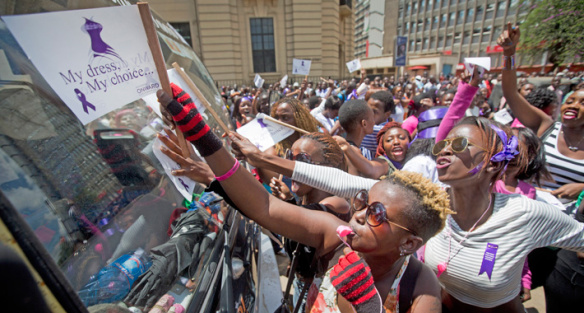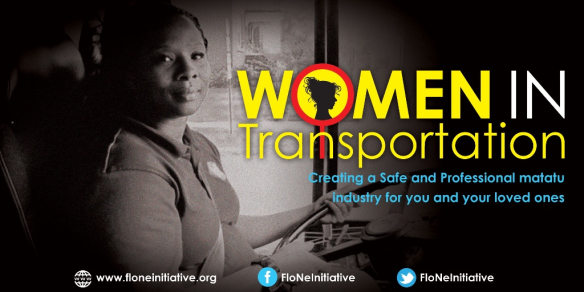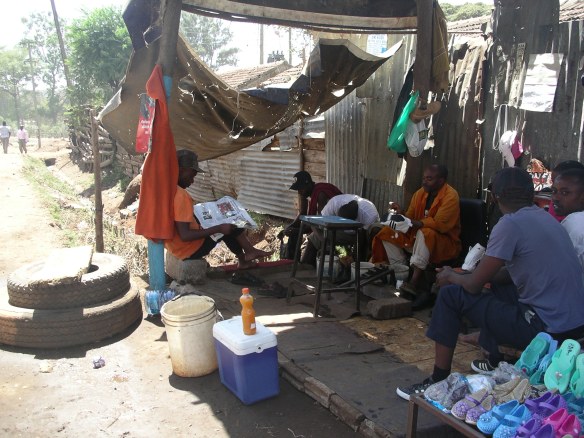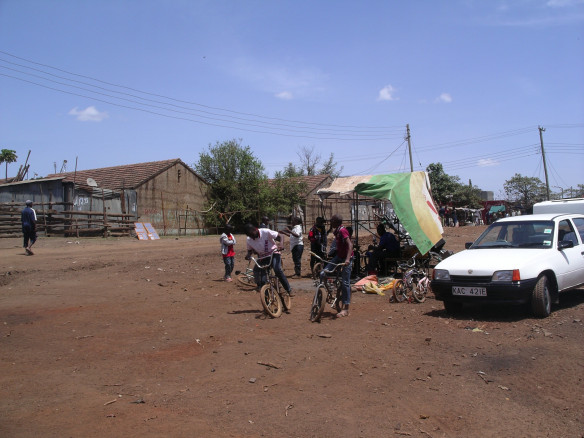By Joe Nderitu
Public transport in Kenya is mainly dominated by the informal sector. This sector has registered tremendous growth after individual bus and van owners formed and joined the co-operative movement (Saccos) which works symbiotically with the National Transport and Safety Authority (NTSA) an arm of the government. Conditions for workers in the informal transport sector are often very poor, and some workers have joined together and formed a registered trade union Public Transport Operators Union (PUTON) which I chair to champion their labour rights. PUTON together with trade unions in developing countries around the globe developed an informal transport workers charter that we are presenting to our respective governments and transport authorities to get recognition.
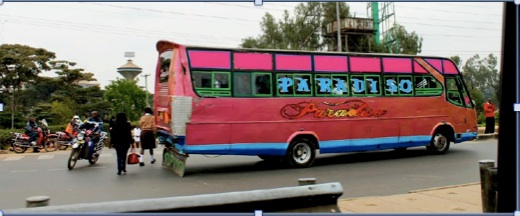
Matatus dominate the public transport sector in Kenya-what is their future?
The transport industry in Kenya is locally called the matatu sector, and you will find different forms of this transit in the 47 counties created by the new Kenyan constitution. Nairobi county, the capital city of Kenya, has experienced exponential growth due to rural to urban migration and this has led to stress on its infrastructure. Formal transport (commuter rail, former bus service) is one example of an urban infrastructure that has not met the demands of the city and wider metropolitan region. This is in part because the government failed to properly invest in this important service. In the past, Nairobi had good bus service that matched the expectations of the city but this collapsed and paved way for the informal mode of transit, the matatu, to be dominant and fulfill the demands of the growing population in the city.
The government has been struggling to regulate the transport industry but usually by punishing the sector rather than working with it on solutions. Recently, for example some disturbing statements have been coming from the government. A transport minister once said that the matatu industry thrives in chaos and would not like to get organized. A chief officer in charge of transport in the county government of Nairobi equated our public transport to informal settlements that needed to be eradicated. An official at the Ministry of Transport put it clearly that there was no room for improving the matatu industry and the government had decided that Bus Rapid Transit (BRT) was the way to go.
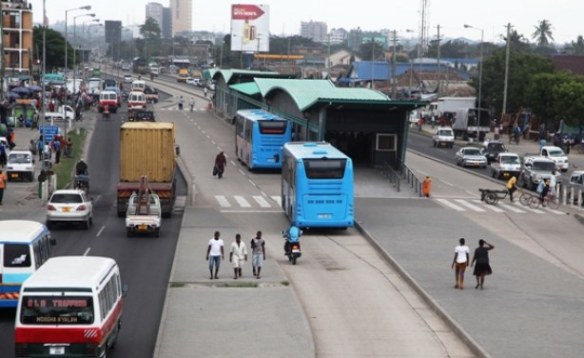
Bus Rapid Transit in Dar Es Salaam-what about improvements outside these corridors?
Bus Rapid Transit (BRT) is a system touted to be environmental friendly, clean and formal. BRT components include bus stations with off board fare collection points, parking slots, washrooms, dedicated bus lanes, non motorized transit routes, big long buses etc. The government of Kenya through the National Transport and Safety Authority (NTSA) with their symbiotic partner City Star Shuttle bus company had a deal and decided to give Kenyans a taste of what mass transit is by bringing in one big articulated bus on the streets of Nairobi. The bus was 17 metres long and was issued with a temporary license and permit to provide transport services in the city.
This was a noble move and idea, but I believe there was some external influence that allowed this bus to operate illegally on our Kenyan roads. The bus appeared not to be registered, and did not conform to the NTSA Act 2012 regulations which public service vehicles (PSVs) are supposed to respect. Fare collection on this bus was in form of cash, whereas in a BRT system it should have a station where pre paid and off board fare collection is enhanced; this big bus was one component of the BRT system but not BRT. BRT uses dedicated bus lanes. The big bus on the streets of Nairobi operated on the same lanes as other motorists sometimes bulldozing itself in your way. BUS RAPID TRANSIT (BRT) IS NOT A BIG LONG BUS!
Further research by our union showed that the driver of this long articulated bus was not promoted from within the City Shuttle bus workforce. This brings to the fore the concern of informal transport workers around how BRT is going to accommodate informal transport workers and provide education and training to improve urban transport. In neighbouring Tanzania, BRT buses don’t have conductors, drivers use microphones fitted on buses to communicate to passengers. Is this the plan for Nairobi? How many jobs will be lost and what will be done to support the many poor when they lose their jobs?
Outering road in Nairobi that connects Thika superhighway to the Jomo Kenyatta International Airport next to Mombasa road is one road that is supposed to have a BRT infrastructure but the designs have flaws. Further, such a BRT system should not be an isolated corridor but have linkage to rail, non-motorised transit that include bicycles and the road transport network. Are there plans for this?
There is no public information neither from the government of Kenya and from the county government on Nairobi about BRT plans. Project Information Document (PID) and Integrated Safeguards Data Sheet (ISDS) from the World Bank are not on the public domain and neither do transport workers understand how these BRT projects will impact their jobs, welfare or wider social justice concerns which includes passenger welfare. These concerns should be raised to these International Financial Institutions funding transport related projects in these region and PUTON is calling out for support from allies to address these issues before the BRT project is implemented.
By the look at things in the city of Nairobi, a lot of better planning by city planners and the Ministry of Transport and dialogue by stakeholders needs to be done to accommodate BRT and to advise whether there are other alternatives,. Can the BRT system be really owned by Kenyans? My worry is that Nairobi city cannot be like Rio De Janeiro, Johannesburg, London, Lagos, Bogota or neighbouring Dar es Salaam but BRT standards should not be lowered to suit the politics of our city. Another issue is how will matatu service feeding into a BRT be improved? Without addressing this problem transport service for many, including the poorest, will not improve. And what will the cost of the BRT be for people and taxpayers? Let us engage in a critical dialogue about BRT and also assess the alternative approaches as the funds provided for these projects are loans, not grants and they will be paid back with interest by Kenyan taxpayers.
Joe Nderitu grew up in the matatu industry and works in the sector in Nairobi County. He is a founder and chairperson of the Public Transport Operators Union which strives to improve conditions for workers and passengers in the matatu industry.

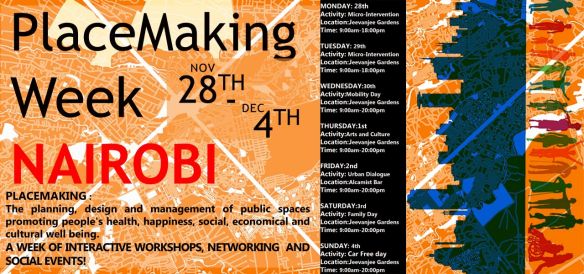






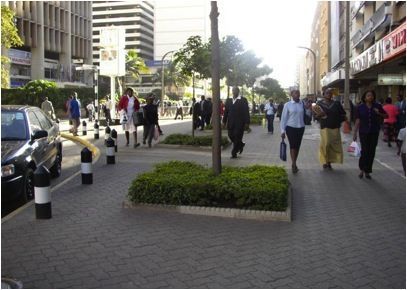
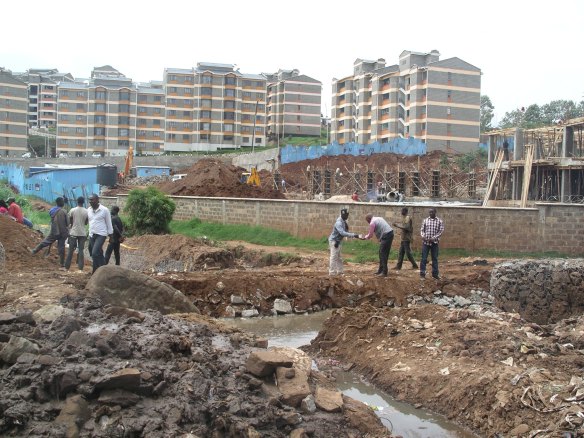
 Jeremiah Atho Ougo is an Urban Planner currently working at UN-Habitat’s Kenya Desk in the Regional Office for Africa. He previously worked as a Physical Planner with the United Nations High Commissioner for Refugees where he supervised shelter, physical planning and infrastructure provision to refugees and host communities living in the Dadaab refugee camps and environs. Jeremiah was also part of the team that prepared (on behalf of Devolution and Planning and Land Housing & Urban Development Ministries) sustainable Integrated Urban Development Plans for various towns in Kenya including Othaya town. He holds a bachelor of Urban Planning degree of Makerere University and a master degree in Project Planning & Management from the University of Nairobi and sits in the Governing Council of the Kenya Institute of Planners as Assistant Registrar and Corporate Member. He is also a registered Lead EIA/EA Expert with the National Environment Management Authority.
Jeremiah Atho Ougo is an Urban Planner currently working at UN-Habitat’s Kenya Desk in the Regional Office for Africa. He previously worked as a Physical Planner with the United Nations High Commissioner for Refugees where he supervised shelter, physical planning and infrastructure provision to refugees and host communities living in the Dadaab refugee camps and environs. Jeremiah was also part of the team that prepared (on behalf of Devolution and Planning and Land Housing & Urban Development Ministries) sustainable Integrated Urban Development Plans for various towns in Kenya including Othaya town. He holds a bachelor of Urban Planning degree of Makerere University and a master degree in Project Planning & Management from the University of Nairobi and sits in the Governing Council of the Kenya Institute of Planners as Assistant Registrar and Corporate Member. He is also a registered Lead EIA/EA Expert with the National Environment Management Authority. 


